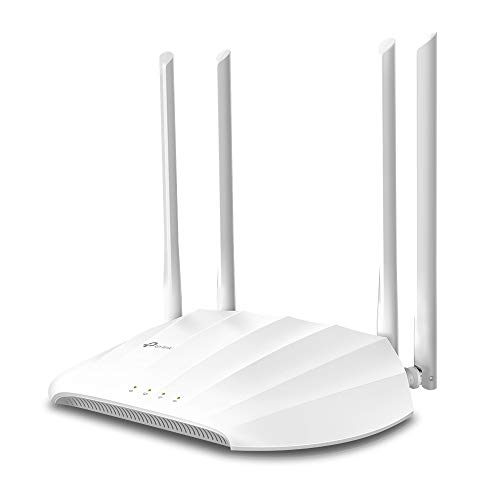Moving into a new home is one of the most exciting events in life. It can also be one of the most stressful. Planning a move, including getting the house ready for move-in, takes a lot of dedication and effort. Home networks and smart home devices are becoming increasingly important to our everyday home lives. Because of this, you should prioritize your new home’s technology infrastructure. Here’s a 9-step tech checklist for making sure your new home is ready for today’s technology.

This page contains affiliate links. If you purchase an item using an affiliate link I will receive a small commission at no cost to you. Affiliates do not influence my recommendations. Read my disclosures for more information.
Table of Contents
Step 1: Inventory existing smart devices
The first step is to inventory the smart home items that are already in your new home. It’s good to know what technology you’ll be inheriting because:
- The home may come with devices you were planning on buying
- It may help you plan for device compatibility and interopability with those you already own or plan on buying
- So you can decide what you’ll keep in the new home, and what you will replace.
As a side note, make sure to specify which smart devices will stay in the home in the purchase contract if you are buying a new home. It’s best to be clear so your expectations are met when you move in.
You should also inventory the smart devices you currently own for many of the same reasons. This is a step I recommend you do when you move out of a home. An additional reason is so you can plan where and how these devices fit into your new home.
Step 2: Check the Ethernet wiring in your new home
When your home is empty is the best time to make many home improvements. Ethernet improvements are no exception. You should make sure you have Ethernet connections in all the locations where you will want wired access. This could include bedrooms, offices, walls with smart TVs, your garage, even near your roof (for PoE cameras).
You’ll also want to make sure you understand where the Ethernet cables connect to each other so you know where and how you will install your network switches, modem, and router.
One last thing you shouldn’t overlook is the quality/standard of the Ethernet wire. These days I recommend at least Cat 6 for new Ethernet wire installation. If the Ethernet already in your home is anything lower than Cat 5, I’d strongly consider replacing it or running additional Cat 6 to the same locations. Cat 6 will handle gigabit connections better, especially over long distances. It also can reliably handle 10 Gbps, unlike Cat 5. You may not need 10 Gpbs now, or even gigabit speeds, but while you have the opportunity you might as well plan for the future.
Step 3: Have a plan for good Wi-Fi coverage
Strong and stable Wi-Fi is critical to family happiness. Before you move in is a great opportunity to plan to have strong and stable Wi-Fi throughout the home. If it is a larger home you should plan for locations where you will put wireless access points, or plan to have a mesh system.
If you are going with wireless access points, you’ll need to make sure you have power and Ethernet (or use PoE) running to the locations where you’ll install them. Many work best on a ceiling or high on a wall. Here are the access points I use.
Be sure to check out my free Wi-Fi Tune-Up guide for ways to improve and troubleshoot your Wi-Fi. I also recommend Wi-Fi routers in my Home Technology Advisor tool.
Popular Wi-Fi Access Points
Step 4: Check if your wiring supports smart thermostats
Smart thermostats are common items for smart home veterans and those just getting started. This is because they are much easier to use than regular thermostats, they offer the convenience of remotely controlling your comfort, and they can actually save you time and money.
Most smart thermostats require a common wire, often referred to as a c-wire. This wire provides consistent power to the thermostat so that it can function 24/7 and stay connected to your Wi-Fi. You should check to see if the thermostats in your new home have c-wires, and if not, have them installed. I had to do this with my ecobee thermostat.
I have recommendations for smart thermostats in my Buyer’s Guide. You can receive a personalized recommendation by using my Home Technology Advisor (scroll down for the smart thermostat advisor)
Popular Smart Thermostats
Step 5: Evaluate your ISP options
You don’t want to move into a new home only to discover that you don’t have any good Internet options. Home Internet access has become so critical in the United States that some state governments require home sellers to disclose their Internet Service Provider (ISP) when selling their homes.
Take some time to research your ISP options before moving in and select the best one for your needs and budget. It is also good to find out if the ISP you select supplies and/or requires a particular router for their service to work.
I recommend trying to get your Internet service set up before you move in. Sometimes it can take a while for ISPs to schedule and install your service.
Step 6: Install network equipment before moving in
Installing network equipment before you move in can take some of the stress out of moving in. Having working Wi-Fi and Internet will make installing and configuring devices in your new home easier to do from the start, and will give the convenience you are already used to.
Additionally, you can easily test whether or not your Wi-Fi plan (Step 3) performs as well as you’d like and make adjustments if it doesn’t.
Step 7: Install smart devices before moving in
Many smart devices, like thermostats, light switches, and smart bulbs, are really part of the infrastructure of your home. Try and install these before you move in and make sure they work. If you have set up your network and Wi-Fi you can fully configure and test these devices.
Try the Smart Home Starter Package Technology Advisor
Step 8: Create an outage plan
Have you thought about what will happen in your new home when the power goes out? How about when your Internet service is down? It’s good to plan for these things before you move in. Learn how to prepare your home for outages of all kinds.
Step 9: Create a safety and security technology plan for your new home
Lastly, but certainly not the least important step, plan for safety and security in your new home. This involves things like installing a security system, leak detectors, smoke detectors, motion detectors, a surveillance system, and smart lighting. Here are the ways my smart home keeps my family safe and secure.
Popular Smart Security Systems
Final thoughts
Moving into a new home is a daunting task. But it is also the best time to make technology improvements that will benefit you for as long as you live in the home.
You should also check out my tips for building a new construction smart home if you are building or significantly remodeling your new home. And if you want a comprehensive guide to building your network, purchase my book, The Home Network Manual.
Interested in supporting HomeTechHacker?
Have you found the content on this site useful? If so, are you interested in supporting me and this site? There’s no obligation of course, but I would really appreciate any support you can give. Below are a few ways you can show support:
- Share this site with your friends and on social media (use the sharing links at the end of this page for your convenience)
- Subscribe to this site
- Purchase one of my books, The Personal Cybersecurity Manual, The Home Network Manual or The Smart Home Manual, for yourself or as a gift
- Put a link to HomeTechHacker on a site you have access to. Be sure to let me know about it!
- Enroll in HomeTechHacker Academy for free and premium online home technology courses.
- Reach out to me via my contact page or Twitter and let me know something I should write about
- Shop at Amazon through my affiliate links and ads on these pages. See my disclosures for more details about affiliate links. You can also just shop from one of the links below:
- HomeTechHacker Shop: This is a listing of products that I use, have reviewed, and that I recommend
- HomeTechHacker Technology Advisor: This suite of tools will give you customized home technology product recommendations based on your needs
- My Amazon affiliate link: Just click on this link to go to Amazon and shop
Thank you! I really appreciate it!

















